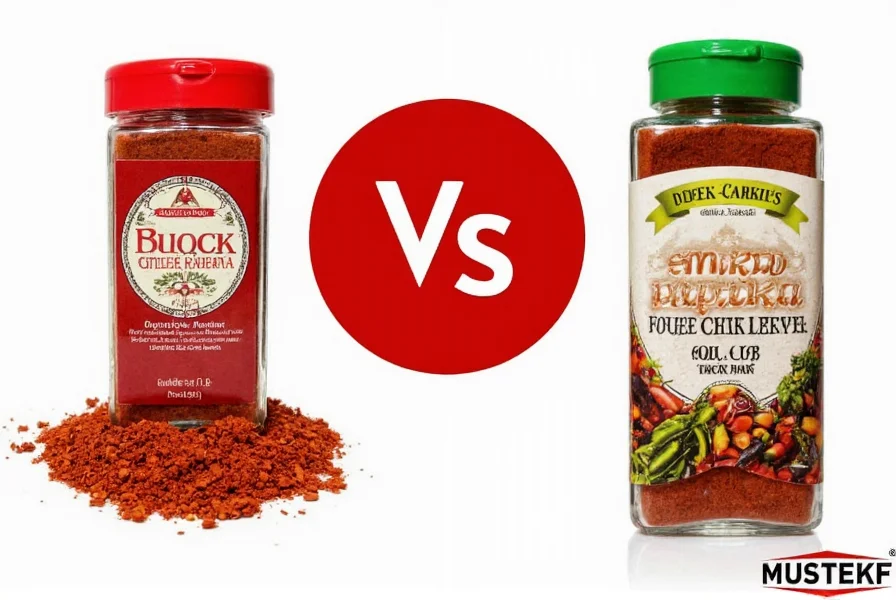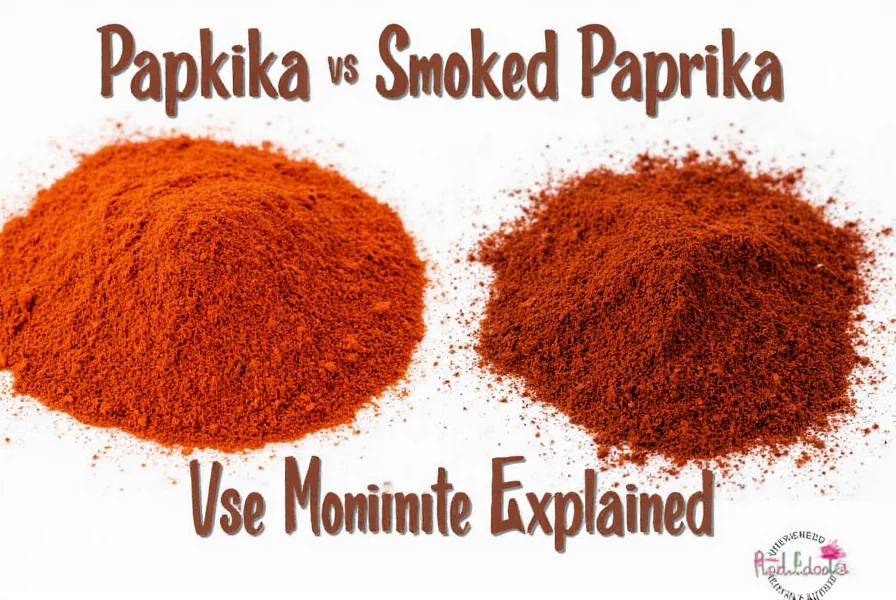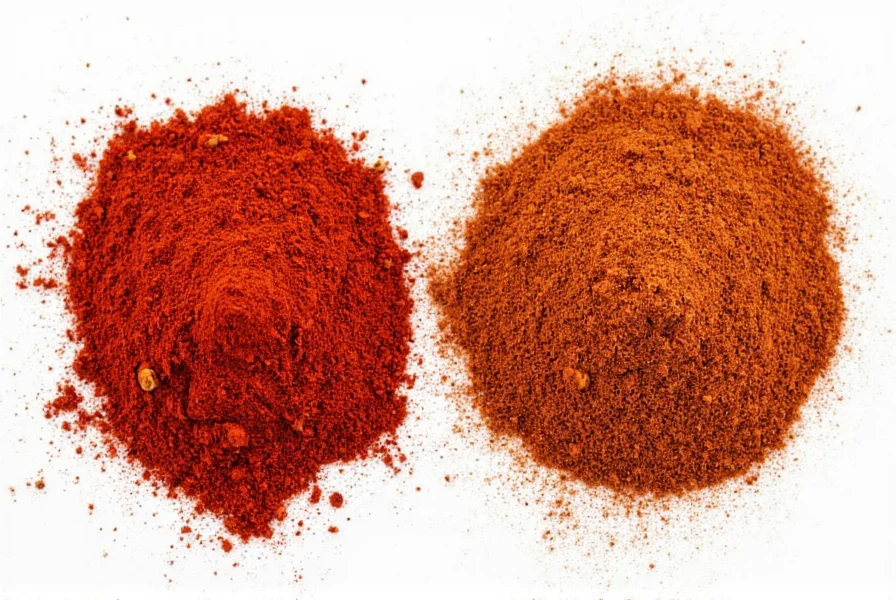Understanding the distinction between these two popular spices is essential for achieving authentic flavors in your cooking. While they may look similar in the spice rack, their production methods and flavor profiles create dramatically different results in dishes.
What Exactly Is Paprika?
Paprika is a ground spice made from dried sweet red peppers, primarily varieties of Capsicum annuum. Originating in Central Mexico but popularized in Hungary, this vibrant red spice comes in various heat levels from sweet to hot. The production process involves harvesting ripe red peppers, drying them thoroughly, and then grinding them into a fine powder. Traditional Hungarian paprika undergoes a careful sorting process where peppers are separated by color and quality before grinding.
The flavor profile of standard paprika is characterized by:
- Mild sweetness with subtle pepper notes
- Earthy undertones
- Minimal heat (unless specified as hot paprika)
- Vibrant red color that enhances dish appearance
The Unique Production of Smoked Paprika
Smoked paprika, known as pimentón in Spain, follows a distinctive production method that creates its signature flavor. The key difference lies in the drying process: instead of air-drying the peppers, they're slowly smoked over oak wood fires for several weeks. This traditional smoking technique originated in the La Vera region of Spain and remains central to authentic smoked paprika production.
During this smoking process:
- Peppers are placed in special smokehouses called secaderos
- Oak wood fires produce cool smoke that slowly dries the peppers
- The smoking continues for 10-15 days, allowing smoke flavors to penetrate deeply
- Peppers are then ground into powder while retaining their smoky essence
| Characteristic | Regular Paprika | Smoked Paprika |
|---|---|---|
| Production Method | Air-dried peppers ground into powder | Peppers smoked over oak fires before grinding |
| Flavor Profile | Sweet, mild pepper flavor | Distinct smoky flavor with varying heat levels |
| Heat Level Range | Sweet to Hot varieties | Dulce (sweet), Agridulce (bittersweet), Picante (spicy) |
| Primary Culinary Uses | Color enhancement, mild flavor in Hungarian dishes | Smoky depth in Spanish, Mexican, and barbecue recipes |
| Color | Bright red | Deep red, sometimes slightly darker |
Flavor Differences That Matter in Cooking
The most significant difference between paprika and smoked paprika lies in their flavor impact on dishes. Regular paprika contributes primarily color and a mild pepper flavor, making it ideal for dishes where you want visual appeal without strong flavor interference. It's the essential ingredient in Hungarian classics like goulash and chicken paprikash.
Smoked paprika delivers an immediate smoky aroma and flavor that can transform a dish. This makes it invaluable for:
- Adding barbecue-like depth to vegetarian dishes
- Enhancing bean dishes and stews with smoky complexity
- Creating authentic Spanish tapas like patatas bravas
- Adding dimension to rubs for meats and vegetables
Understanding the difference between sweet paprika and smoked paprika is crucial when following recipes from different culinary traditions. Using the wrong type can dramatically alter the intended flavor profile.
Can You Substitute One for the Other?
When considering can I substitute smoked paprika for regular paprika, the answer depends on your recipe and desired outcome. In dishes where smokiness isn't essential (like Hungarian goulash), substituting smoked paprika would create an inauthentic flavor. However, in many American-style recipes, especially barbecue sauces or chili, smoked paprika often works well even when regular paprika is specified.
If substituting regular paprika for smoked paprika, you'll lose the distinctive smoky element. To compensate, consider adding a tiny amount of liquid smoke (⅛ teaspoon per teaspoon of smoked paprika) or using chipotle powder for heat and smokiness. Remember that paprika vs smoked paprika heat levels can vary significantly by brand, so always check the label.
Storage Tips for Maximum Flavor Preservation
Both types of paprika benefit from proper storage to maintain their vibrant color and flavor. Store in airtight containers away from light and heat. While regular paprika typically maintains quality for 2-3 years, smoked paprika's complex flavor compounds may begin to fade after 18-24 months. For the most intense flavor experience, buy smaller quantities and replace more frequently.
Understanding what gives smoked paprika its distinctive flavor helps explain why proper storage matters—the delicate smoke compounds are more volatile than the base pepper flavors in regular paprika.
Common Misconceptions Clarified
Many home cooks mistakenly believe that smoked paprika is always hotter than regular paprika. This isn't true—smoked paprika comes in sweet (dulce), bittersweet (agridulce), and hot (picante) varieties, just as regular paprika ranges from sweet to hot. The smoking process adds flavor complexity but doesn't inherently increase heat.
Another common confusion involves the difference between Hungarian paprika and smoked paprika. Hungarian paprika refers to the origin and traditional production method (air-dried), while smoked paprika refers to the smoking process regardless of origin. Authentic Hungarian paprika is never smoked.
Practical Applications in Your Kitchen
When deciding best uses for smoked paprika in cooking, consider these applications:
- Add ½ teaspoon to deviled eggs for smoky depth
- Mix with olive oil for a flavorful roasted vegetable coating
- Enhance tomato-based sauces with authentic Spanish flavor
- Create a simple yet impressive spice rub for grilled meats
Regular paprika shines in applications where color matters most:
- Garnish for potato salads and deviled eggs
- Base flavor in Hungarian stews and soups
- Color enhancement for salad dressings and mayonnaise
- Essential component in traditional red dishes like túró rudi

Final Considerations for Flavor Success
Mastering the distinction between these two spices elevates your cooking from good to exceptional. When following international recipes, pay close attention to which type is specified—using the correct paprika variety maintains culinary authenticity. For experimental cooking, understanding these differences allows you to intentionally create specific flavor profiles.
Remember that quality varies significantly among brands. For authentic Hungarian dishes, seek out Hungarian paprika labeled as such. For genuine smoky flavor, look for Spanish pimentón de la Vera with PDO (Protected Designation of Origin) certification. This attention to detail makes all the difference when exploring the difference between paprika and smoked paprika in practice.












 浙公网安备
33010002000092号
浙公网安备
33010002000092号 浙B2-20120091-4
浙B2-20120091-4